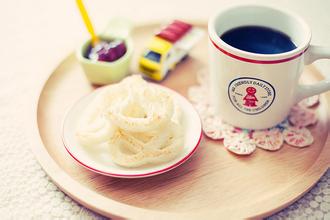How many kinds of coffee are treated by dried-- different beans are treated differently.
How many kinds of coffee are treated by dried? isn't it the same for different beans?
This method is extremely common in Brazil. The natural washing method is very similar to the water washing method, except that the natural washing method uses a high-pressure washing machine to remove the mucous membrane of the coffee surface, thus skipping the fermentation process. Several raw coffee processing companies in Brazil and Colombia have patented this method and have become local natural water system processing monopolies. The amount of water used in this method is much lower than that of washing hair, so some people are used to calling it "semi-drying (Semi-Dry)". Because there is no fermentation, coffee beans do not exist (or only have a very low risk of fermentation), and the overall quality of coffee is more constant. Unfortunately, the taste of coffee tends to be flat because it is not fermented. As a result, growers will not use natural washing for ultra-high quality coffee beans. Most raw bean purchasing companies also rarely buy coffee processed by natural washing. 4. Honey treatment method
Today, honey treatment is used in almost all the producing areas of Costa Rica. This method is also widely spread throughout Central America. Because the surface mucosa of coffee beans is extremely slippery and the sugar content is extremely high, it is often called "honey". In the process of honey treatment, coffee will leave some or all of the "honey" when it is dried. After the coffee fruit is picked, graded and peeled, it is placed on a drying bed to dry.
Because the drying time of the mucous membrane is very short, coffee beans hardly ferment during the drying process. Coffee beans processed with this method are slightly more acidic than natural washing, but much lower than water washing and natural sun processing. Some plantations that have not used honey treatment in the past have to use the tools at hand to process the coffee. Since raw bean processing plants in most regions, such as Latin America, Kenya and Ethiopia, used to use water to transport raw coffee beans, coffee beans lose some of their mucous membranes during transportation. In places such as Costa Rica, Brazil or Colombia, local processing plants used to use high-pressure washing machines, so part of the mucous membrane was removed during the peeling process. According to the amount of mucosal residue (40% Mel 100%), honey treatment is divided into 4 grades: 40%, 60%, 80% and 100%. Of course, some growers deliberately remove part of the mucous membrane to ensure that the coffee does not become sour due to fermentation during the drying process.
The light time of raw coffee beans treated with yellow honey was the longest. Longer light means higher heat, so the coffee can be dried within a week. In general, the drying time of coffee depends on the local climate, temperature and humidity. The drying time of raw coffee beans treated with red honey is 2-3 weeks, usually due to weather or placed in a dark place. If the weather is clear, the grower should block part of the sun to reduce the sunshine time. The coffee beans treated with black honey were left in the dark for the longest time and the shorter the light time. The drying time of this coffee is at least 2 weeks. The black honey treatment of raw coffee beans is the most complex and the labor cost is the highest, so the price is the most expensive.

Important Notice :
前街咖啡 FrontStreet Coffee has moved to new addredd:
FrontStreet Coffee Address: 315,Donghua East Road,GuangZhou
Tel:020 38364473
- Prev

Is caffeic acid also found in finished coffee?-what happens if you eat too many caffeic acid tablets?
Is caffeic acid also found in finished coffee? what happens if you eat too much sour coffee tablets? although most Chinese people are not used to sour coffee, Western coffee connoisseurs or connoisseurs are only sour. I like the lively, clear and changing layers of light-roasted coffee. They disdain to drink deep-roasted coffee, which is monotonous and unfruitful. Connoisseurs choose Arabica, which is above 5,000 feet above sea level, to be extremely hard.
- Next

Effect of coffee powder thickness on hand-made coffee common grinding thickness diagram
The effect of coffee powder thickness on hand brewing coffee is a good way to control bitterness, because the finer the grinding, the higher the extraction rate, the easier it is to extract high molecular weight astringent bitter substances such as chlorogenic acid, quinic acid, caffeine and carbonization. On the contrary, if the grinding is too rough, the lower the extraction rate is, the more difficult it is to extract high molecular weight astringent bitterness, but the sweet taste of middle molecular weight may also be caused by
Related
- What brand of black coffee is the most authentic and delicious? what are the characteristics of the flavor of the authentic Rose Summer Black Coffee?
- Introduction to the principle and characteristics of the correct use of mocha pot A detailed course of mocha pot brewing coffee is described in five steps.
- Which is better, decaf or regular coffee? how is decaf made?
- How much is a bag of four cat coffee?
- How about four Cat Coffee or Nestle Coffee? why is it a cheap scam?
- Which is better, Yunnan four Cats Coffee or Nestle Coffee? How about cat coffee? is it a fake scam? why is it so cheap?
- How about Cat Coffee? what grade is a hoax? which instant coffee tastes better, four Cat Coffee, Nestle Coffee or G7 coffee?
- Process flow chart of coffee making-Starbucks coffee making process what coffee tastes good at Starbucks
- The top ten best coffee beans in the world Rose summer coffee or Tanzanian coffee tastes good
- Yunnan four cat coffee is good to drink?_four cat coffee is a big brand? four cat blue mountain coffee is fake?

